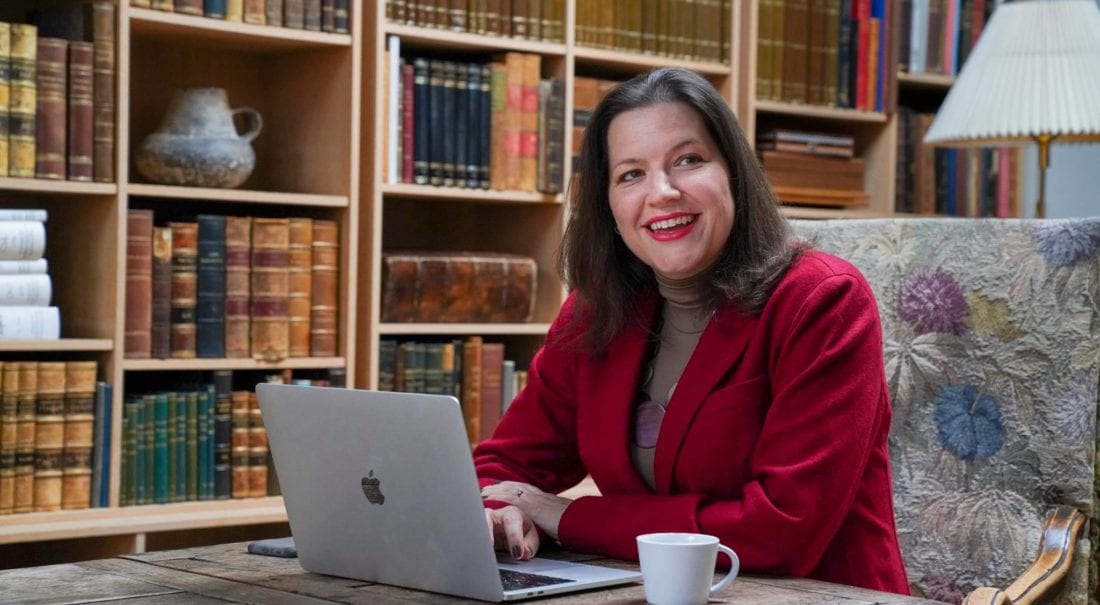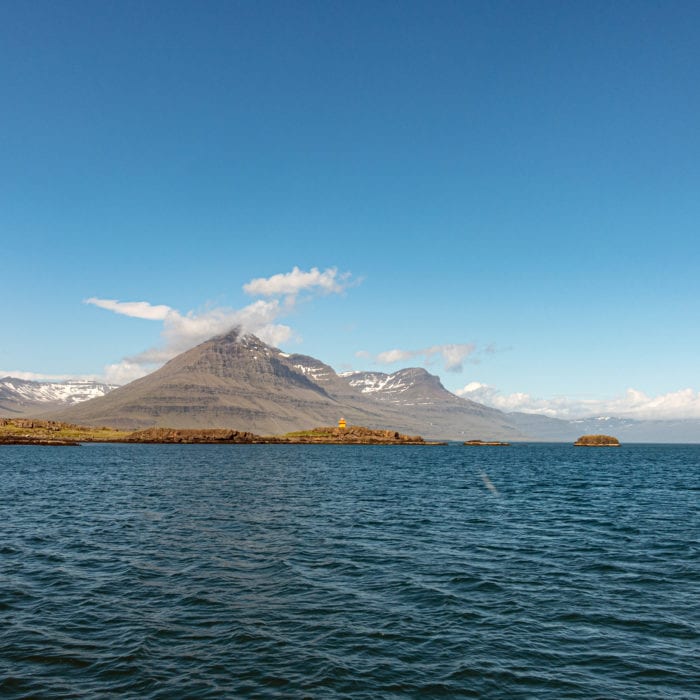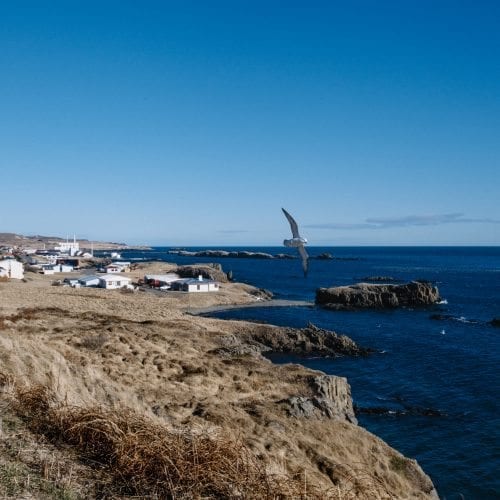
“I am Icelandic and I am Canadian as well”
I meet Eliza Reid, the First Lady of Iceland, on a bumpy Skype-connection one morning in the beginning of July. She pops up wearing an Icelandic football t-shirt in her home office at Bessastaðir and just has to send off one of the kids on bike before our chat can begin. Back in front of the computer, I tell Eliza about our aim to put more focus on foreigners living and settling in Iceland.
Hi Eliza.
Hi to the East of Iceland!
When you moved to Iceland in 2003, how was your experience being a foreigner settling in the country?
“I had a very positive experience. Our plan was to move and be here at least 10 years. In other words to settle. I really wanted to have my own reason for being in the country so that I was not just tagging along. My husband had his own network of friends from menntaskólinn and from growing up in the country. He is also eight years older than I am and the age gap felt more significant back then, so all his friends had kids and were in a different phase in their lives than I was. I had to make my own friends and was lucky to find a job where I met a lot of Icelanders. I also started learning Icelandic soon after we moved here. Not only did I learn the language, but I also acquired quite a big group of friends among international people living here.”
You refer to yourself as a foreign-born Icelander. What does this mean to you and when did you begin to feel this way?
“Probably when I got Icelandic citizenship in 2007-8. I still feel Canadian too, so I do not think there is a rule whereby you are not allowed to call yourself an Icelander if you do not have citizenship or you have to call yourself an Icelander if you have citizenship. But to me that was probably the point where I felt: “Okay, I am Icelandic and I am Canadian as well.””
If you were to give one piece of advice to a foreigner moving to Iceland today, what would it be?
“I think it helps to try to learn Icelandic although I know how difficult it actually is to speak it. Also, getting out there and making local friends and putting down your own roots is important. If you want to live here, you need to do that by yourself. That said, I completely appreciate that it can be exhausting and frustrating, but that is the immigrant experience no matter where you move.
There are different challenges at different phases. I found the winter to be quite challenging when moving here. Canada is known to be a very northern country, but the whole continent is much further south, so my hometown Ottawa is at the same latitude as Nice in France. Even though it is much colder there in winter, the sky is bright. As a child I never had to wake up in the dark to go to school. The sun would always be up. So moving to Iceland, I really struggled with how dark and windy it was in winter time.”
Have you gotten used to that by now?
“No (laughing), but I do not complain about it as much. You just change your habits and attitude. You learn to appreciate breakfast by candlelight.”
The demographics of Iceland are changing as more and more foreigners settle here. Do you have any good advice for the Icelanders in terms of welcoming new people to the country?
“I think it is important to be aware of inclusivity and involvement, for instance when you are forming a team at your office, putting together people for your choir or the birthday committee at the local council. In Iceland, we are 13% foreign-born people and that does not count people like me who already have citizenship. We do not necessarily see that reflected when people are being interviewed in the media, taking part in social activities and so on. It took conscious decisions and awareness to push for greater gender balance on boards and in companies. That philosophy, I would say, should apply to foreign-born people too. I think wearing our “inclusivity glasses” can be helpful.”
Secondly, a practical thing is to be patient and understanding with people who are learning the language. Icelanders speak great English. The first ten years I was living here, Icelanders’ English was usually better than my Icelandic. I would have these stilted Icelandic conversations with people and both of us would think: “This is ridiculous. Why do we not switch to English?” But I would never have advanced in the language unless I had gone through that process. My Icelandic is very good at this stage, but I still meet people who just keep switching to English and I keep switching back to Icelandic (laughing).
Thank you, Eliza. Pleasure talking to you!
“You are welcome. Say hi to the East.”
Text: Nanna Vibe S Juelsbo.
Photos: Ólafur Ásgeir Jónsson (above) and Guðmundur Þór Kárason (left)
This article was first published in a special edition of Austurglugginn dedicated to the foreign-born residents of Austurland. The publication is a part of a bigger project hosted within Austurbrú called Voices of foreign-born people in Austurland. It aims to raise awareness of the experiences of the foreign-born population in the region. Our partners in this project are: AFL, Red Cross of Austurland, Austurland Publishing Company, Fjarðabyggð og Fljótsdalshérað.



